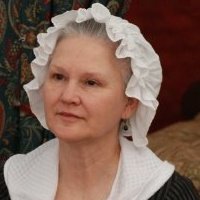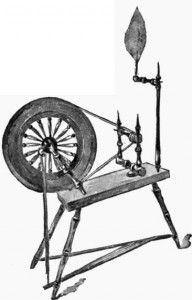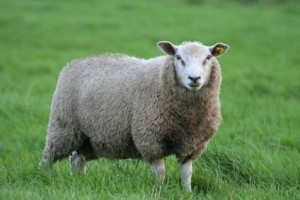 Welcome to my blog! The week of 29 June – 5 July, I’m participating with more than two hundred other bloggers in the “Freedom to Read” giveaway hop, accessed by clicking on the logo at the left. All blogs listed in this hop offer book-related giveaways, and we’re all linked, so you can easily hop from one giveaway to another. But here on my blog, I’m posting a week of Relevant History essays, each one focused on some facet of the American War of Independence. To find out how to qualify for the giveaways on my blog, read through each day’s Relevant History post below and follow the directions. Then click on the Freedom Hop logo so you can move along to another blog. Enjoy!
Welcome to my blog! The week of 29 June – 5 July, I’m participating with more than two hundred other bloggers in the “Freedom to Read” giveaway hop, accessed by clicking on the logo at the left. All blogs listed in this hop offer book-related giveaways, and we’re all linked, so you can easily hop from one giveaway to another. But here on my blog, I’m posting a week of Relevant History essays, each one focused on some facet of the American War of Independence. To find out how to qualify for the giveaways on my blog, read through each day’s Relevant History post below and follow the directions. Then click on the Freedom Hop logo so you can move along to another blog. Enjoy!
 Relevant History welcomes Peggy Earp, currently a resident of Lexington, Tennessee and the former co-owner of 96 District Fabrics, a provider of period-correct fabrics. Originally from Oklahoma, Peggy lived in South Carolina for twenty years along with her husband and two children before moving to Tennessee last September. After selling their business this year, she and her husband are enjoying a life of semi-retirement, and looking forward to the birth of their first grandchild. For more information, contact her through email at peggyearp (at) gmail (dot) com.
Relevant History welcomes Peggy Earp, currently a resident of Lexington, Tennessee and the former co-owner of 96 District Fabrics, a provider of period-correct fabrics. Originally from Oklahoma, Peggy lived in South Carolina for twenty years along with her husband and two children before moving to Tennessee last September. After selling their business this year, she and her husband are enjoying a life of semi-retirement, and looking forward to the birth of their first grandchild. For more information, contact her through email at peggyearp (at) gmail (dot) com.
*****
The year is 1775, and I live in the backcountry of western South Carolina with my husband and five children. We have forty acres, two mules, and a two room cabin with a loft. When I came here from northern Virginia as a newlywed, I had never considered the daily realities of feeding, clothing, and keeping healthy seven people.
In 1995 my husband, Dennis, and I, along with our children, began volunteering at Ninety Six National Historic Site, in Ninety Six, South Carolina. Through volunteering, we began our quest for knowledge of the Revolutionary War and the domestic activities of daily life during that period. The life of the soldier is well documented, but what about the family left at home: whether in town or the sparsely-settled countryside?
Many times over the last fifteen years, I have considered the beginning scenario above. If I were this wife and mother, what would I have done? How would we have lived? How would I have provided for my children?
 As we began researching the Revolutionary War, I developed a deep interest in the textiles of the era. Could our family, by our own hands, have provided all our own fabric for bedding, linens, and clothing? Could we have furnished ourselves with warm woolen cloth for winter clothes? What would producing our own wool entail? We would have to raise the sheep, shear them in the spring, wash the wool, card and spin the wool into yarn, and then weave the wool into woolen fabric.
As we began researching the Revolutionary War, I developed a deep interest in the textiles of the era. Could our family, by our own hands, have provided all our own fabric for bedding, linens, and clothing? Could we have furnished ourselves with warm woolen cloth for winter clothes? What would producing our own wool entail? We would have to raise the sheep, shear them in the spring, wash the wool, card and spin the wool into yarn, and then weave the wool into woolen fabric.
If we were to have nice linen fabrics, could we have possibly be able to produce that fabric from start to finish? Could we have planted, grown, and harvested the flax? Could we have retted, scutched, hackled, spun the flax into linen thread, and then woven the thread into fabric?
Could my family have produced all our cloth? It is my personal opinion, that no, we could not. Not even close.
Up until January of this year, Dennis and I owned a fabric supply business. We specialized in period-correct fabrics for reenactors, museums, historic sites, and movie productions. We traveled up and down the east coast, attending living history events. Early on, while speaking with the general public, I discovered that most people assume that in the “olden days,” everyone provided all needed items for themselves. That there were no places to buy ready-made clothes, or yard goods for making your own clothes.
What did the average family do about fabric and clothing? Did they provide for themselves, or did they barter or buy clothes and cloth? In my search for answers, I have concluded that what families could provide for themselves in 1775 is as varied as what families can provide for themselves today.
Most did not have enough land for growing sheep for wool, or for planting flax or cotton. Nor did they have enough hands for tilling, planting, tending, and harvesting. Children were taught at an early age to help with whatever chores were necessary for survival. Boys were taught farming, hunting, chopping wood, and other activities. Girls were taught cooking, sewing, spinning, and weaving.
But not all families were equal. Some families had all boys, or all girls, or had no children. Some families were plagued with illness, or with the death of one spouse. What did they do to meet these challenges?
Most families did make their own clothes, especially their underclothes. They were well-made, handed down, patched as needed, altered, until they were generally used up. The rags were then used for many purposes or sold to the rag picker. Some families did grow sheep and sell the wool, or maybe spun the wool into yarn, and used the yarn to barter for cloth goods. Or they grew linen or cotton and sold or traded it either as raw goods or as spun thread or woven cloth.
The possibilities are countless as to how they obtained their fabric. In western South Carolina there were several trading posts in the late 18th century. Their inventory lists show an extensive variety of cloth.
 There were also many itinerant spinners and weavers. You could grow your own wool or flax, and then wait until the spinner came by on their circuit. You provided housing for them for several weeks while they spun all the season’s wool into yarn or flax into thread. Or maybe you had the means to spin your own yarn, and the weaver came and wove all the yarn into cloth.
There were also many itinerant spinners and weavers. You could grow your own wool or flax, and then wait until the spinner came by on their circuit. You provided housing for them for several weeks while they spun all the season’s wool into yarn or flax into thread. Or maybe you had the means to spin your own yarn, and the weaver came and wove all the yarn into cloth.
Many of the large landholders did provide a good portion of their own fabric. They had slaves or indentured servants to perform all the labor. They could then produce enough cloth for the household linens and clothes for the servants. They may have custom-ordered clothing for the immediate family from the local seamstress, from Charles Town, or from England, depending on their weath.
In January of this year, Dennis and I sold our textile business. But this has not diminished my desire to learn more about fabrics and their manufacture in the 18th-century American South. My research goes on!
*****
A big thanks to Peggy Earp. She’ll give away instructional DVDs from Renee Gillespie on spinning with a drop spindle or spinning wheel to two people who contribute legitimate comments on my blog today or tomorrow. Delivery is available worldwide. Make sure you include your email address. I’ll choose the winners from among those who comment on this post by Monday 2 July at 6 p.m. ET, then publish the name of all drawing winners on my blog the week of 9 July. And anyone who comments on this post by the 2 July deadline will also be entered in the drawing to win one of two autographed copies of my book Regulated for Murder: A Michael Stoddard American Revolution Thriller.
**********
Did you like what you read? Learn about downloads, discounts, and special offers from Relevant History authors and Suzanne Adair. Subscribe to Suzanne’s free newsletter.
